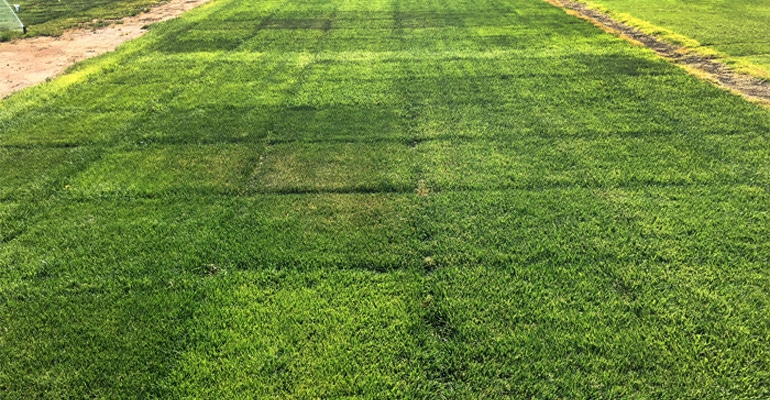August 14, 2018

New Mexico State University Regent’s Professor and Extension Turfgrass Specialist Bernd Leinauer and Research Assistant Professor Matteo Serena are finding a previous notion that Kentucky Bluegrass is a poor choice for droughty climates to be misleading if not incorrect. They are looking to change the public’s perception on which turfgrasses can survive the best in the drought conditions we find in our region.
Turfgrasses can be broken down into two major groups: cool- and warm-season grasses. Warm-season grasses such as bermudagrass have greater drought tolerance than cool-season but homeowners tend to prefer cool-season grasses because they stay green all year round and feel cool and comfortable when you walk on it. Cool-season grasses include tall fescue, fine fescue, Kentucky bluegrass and perennial ryegrass.
According to Leinauer there is a perception that cool-season grasses require a lot of water, but he says it’s not the grass that’s the problem, but rather homeowners irrigating more than what’s needed. Therefore, Leinauer and his team established multiple plots with different grasses receiving different amounts of water to look at their response to different levels of drought.
“The major reason for water overuse is based on the homeowner watering too much. If you think your grass is using too much water, apply less. Let’s find out how much water we can save. And that’s what our research is looking at. We are using climate data to calculate water needed and are irrigating different types of grasses at the full amount (100 percent) then we dial it back to 80, 60, and 40 percent and we check how the grasses compare along this reduction,” Leinauer said.
To figure out how much water each percentage amounts to, Serena uses their water station located just outside the field.
“Every Monday morning, I download the data and calculate the numbers. We use ET, which stands for evapotranspiration. At the beginning of the season we did an irrigation audit, placing catch cans on the plots to measure how much goes out in a given period of time. We then convert the amounts to inches per day and minutes of run time,” Serena said.
Applying significantly less water than what is considered adequate puts the grasses in drought stress. While it’s important for the different types of grasses to survive while being given less water, it is also important to see how well they recover.
“When we factor in both the amount of water needed and recovery after drought stress, the winner among cool-season grasses is Kentucky bluegrass. It’s not only about performance during drought, it’s equally important how quickly and well grasses can recover after drought. Such considerations are important for our region,” Leinauer said. “If homeowners want a cool-season grass and if they want to take water conservation to its fullest extent, which means less water during periods of time but then let the grasses recover (taking advantage of the rainy season) to lower irrigation amounts, the choice should be Kentucky bluegrass.”
Such findings are different than what has been previously stated. The general opinion has been Kentucky bluegrass should not be used because of the amount of water it needs to survive.
“This message is the complete opposite of what we’ve been hearing and what water utilities and city politicians tell us. Kentucky bluegrass has been perceived as the worst of all and uses the most water. However, our findings don’t support that. Our results show if a cool-season grass is chosen, Kentucky bluegrass should be grass of choice,” Leinauer said.
“Of course, choosing the right grass or plant is only one tool in the water conservation toolbox. Several other factors also contribute to irrigation overuse and need to be considered.” Leinauer is looking to provide a holistic approach and educate others on his and his team’s 15 years’ worth of findings. “There is too much emphasis on the plant selection and breeding and not enough on some of the other factors such as efficient irrigation.”
Source: NMSU
You May Also Like




